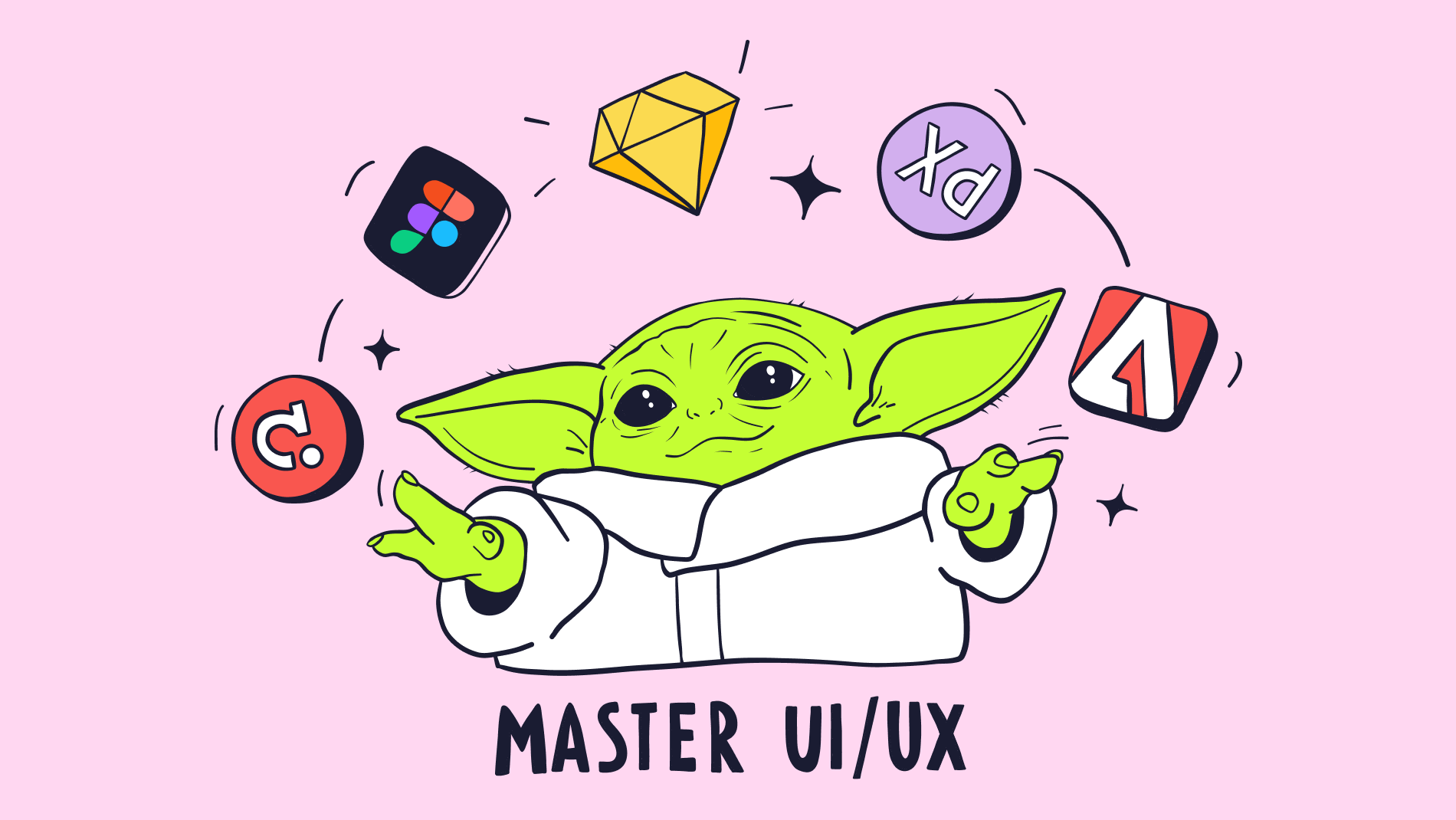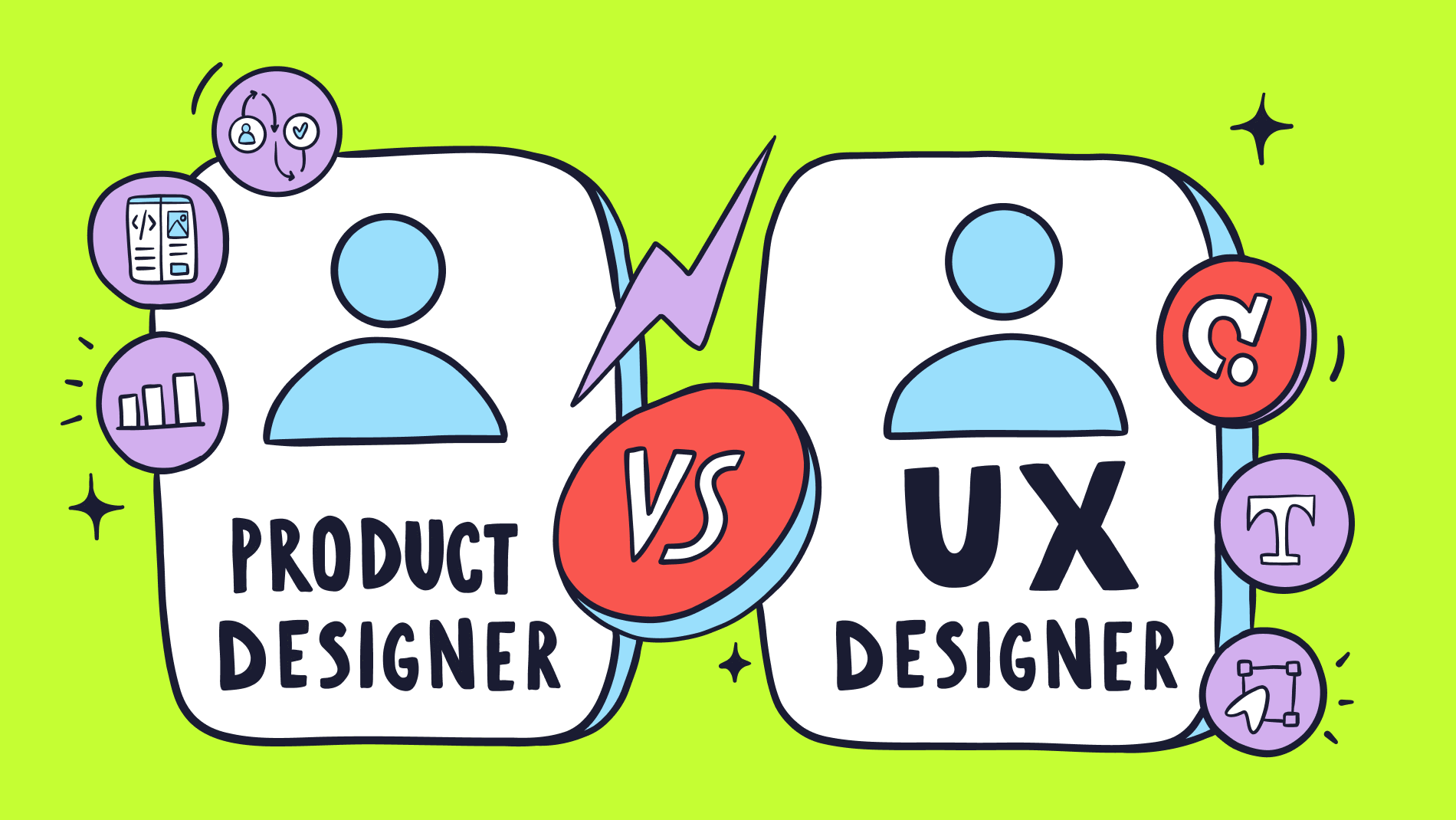What is UI?
UI stands for "user interface." It refers to how a user interacts with a software application or digital device. A user interface can include various elements such as buttons, menus, text boxes and graphics that allow the user to control and interact with the software or device.
A good user interface should be intuitive, easy to navigate and efficient. It should help the user achieve their goals quickly and without confusion. User interface design is an important aspect of software and digital device development because it directly affects the user experience and can influence the acceptance and success of a product.
What is UX?
UX stands for "user experience." It is the overall experience a user gets from a product, such as a software application, website or digital device. UX design involves understanding the needs, goals and behaviours of users and then designing a product that meets those needs in a way that is easy and enjoyable to use.
UX design involves several different disciplines, including user research, interaction design, information architecture, usability testing, and visual design. The goal of UX design is to create a product that is both useful and enjoyable to use, as well as meeting the needs and expectations of users.
A good user experience is essential to the success of a product as it can directly influence factors such as user acceptance, customer satisfaction and engagement. UX design is an iterative process that involves continuous testing and refinement to create a product that meets user needs and provides a positive overall experience.
What is the difference between UI and UX?
UI (user interface) and UX (user experience) are different aspects of design that focus on different things.
UI is about how a product or system looks and feels. It deals with visual elements such as buttons, menus, colours and icons. UI designers strive to make the interface visually appealing and easy to use. They focus on creating a beautiful design that users can navigate easily.
On the other hand, UX is the overall user experience when using a product or system. It's not just about how it looks, but how it works and how the user feels. UX designers want to make sure the product is useful, easy to use and enjoyable. They consider things like how users interact with the product, their needs and goals, and how they feel while using the product.
Simply put, UI is visual design and UX is the overall user experience. Both UI and UX are important in creating a good product. Beautiful design is important, but it also needs to be easy to use and meet the user's needs. Therefore, UI and UX often work together to create the best possible experience for the user.
Basic UI Principles
User interface (UI) design principles serve as a guide for designers to create visually appealing, user-friendly, and purposeful interfaces. Here are a few key principles that design novices can understand:
- Keep it simple: create an intuitive interface, avoiding unnecessary elements and cluttered design that can confuse users.
- Be consistent: maintain consistency in the design, layout, and typography of the entire interface to provide an intuitive and familiar user experience.
- Use clear and concise language: Convey information using easily understood language, avoiding technical jargon. Clearly labelled and provide instructions to help users navigate the interface.
- Provide feedback: Offer feedback to users as they interact with elements on the screen. Visual cues, such as animations or sound effects, can help users understand the consequences of their actions and feel in control.
- Use visual hierarchy: use visual elements such as colour, size and contrast to create a clear hierarchy that helps users navigate the interface and highlights important elements.
- Provide easy navigation: Design clear and easy-to-use navigation that allows users to navigate the interface quickly and efficiently.
These principles provide designers with a fundamental basis for creating effective user interfaces that meet the needs of their users. It is important to note that designers should continue to learn and adapt their approaches based on user feedback and evolving design trends.
Basic UX principles
User experience (UX) design principles include a set of guidelines that designers follow to create a meaningful and satisfying experience for users. Here are some basic UX design principles that we want to highlight:
- User-centred design: Put the user at the centre of the design process. Understand his needs, goals and behaviour through research and analysis. Design solutions that meet user expectations and deliver value.
- Clear and consistent communication: Communicate information clearly and consistently throughout the user journey. Use simple and clear language, intuitive icons and visual cues to guide users and help them make informed decisions.
- Simplicity and usability: Strive for simplicity in design. Eliminate unnecessary complexity and optimise the user interface. Make interactions and tasks intuitive, so users can easily achieve their goals.
- Emotional Response: Design with empathy to create an emotional connection with users. Understand their motivations, desires, and pain points. Customise the experience so that it evokes positive emotions and fosters feelings of excitement and satisfaction.
- Context and Usability: Consider the context in which the product or system will be used. Design for different devices, environments and user scenarios. Ensure usability by providing clear navigation, intuitive interaction, and quick access to the information needed.
- Iterative design and continuous improvement: Apply an iterative design process that includes testing, training, and refinement. Gather user feedback, conduct usability testing, and make data-driven decisions to continually improve the user experience.
These principles serve as the foundation for UX designers to create an intuitive user experience. By following these principles, designers can create products that not only meet user needs but also exceed user expectations, leading to long-term user satisfaction and loyalty.
Basic requirements for a UX/UI designer
To become a UX/UI designer, there are some basic requirements and skills that can put you on the right path to success. Here are the basic elements you should consider:
- Creativity and design thinking: UX/UI designers must have creative thinking and aesthetic taste. The ability to think outside the box and come up with innovative design solutions is highly valued in this field. These skills and qualities are crucial.
- Understanding UX: A solid understanding of user experience (UX) principles is fundamental. This includes knowing how to conduct user research, create user personas, map out user journeys, and design intuitive interfaces that meet user needs.
- Visual Design Skills: Mastery of visual design skills is essential for user interface development. This includes knowledge of typography, colour theory, layout design and creating a harmonious interface.
- Mastery of design tools: Knowledge of industry standard design tools is essential. Popular tools for UX/UI design include Sketch, Adobe XD, Figma, and InVision. It is important to learn these tools and stay up to date with their latest features.
- Creating wireframes and prototypes: UX/UI designers should be able to create sketches and prototypes to visualise and test their concepts. This helps in refinement and evaluation before final implementation.
- Teamwork and communication skills: UX/UI designers often work in teams, collaborating with developers, product managers and stakeholders. Strong communication skills are essential to effectively communicate design ideas, gather feedback, and work collaboratively.
- Continuous Learning: The UX/UI design field is constantly evolving, so it's important to have a growth mindset and a passion for learning. Keep up to date with the latest design trends, attend workshops, join design communities and seek professional development opportunities.
Is it worth going on a UX/UI design course?
There are so many adverts about design schools and courses everywhere these days. It can be difficult to navigate through the sea of options and determine the best way to get started in design, especially when it comes to investing your hard-earned money.
Here's the thing, the field of design is really competitive and many schools and online platforms take advantage of this by advertising their courses as the ultimate solution. However, you need to approach this decision critically and consider a few key factors before investing your money:
1. Define your goals
Start by clarifying your goals and what you want to achieve through design education. Do you want to change careers, improve your existing skills, or simply bring out your creative side? Understanding your goals will help you make an informed decision about which courses match your aspirations.
2. Read reviews
Take the time to research the different institutions, platforms and courses that are being offered to you. Read reviews, testimonials and independent opinions from other learners to gauge the quality and effectiveness of the programmes. Read the stories and learning outcomes of students to understand how useful these courses can be.
3. Consider your learning style
Think about how you learn best. Are you more comfortable learning on your own online, or do you prefer a structured classroom environment? Some people prefer the flexibility of online courses, while others prefer hands-on, interactive classes. Choose a learning format that suits your preferences and helps you stay motivated throughout the learning process.
4. Explore free resources
Remember that not all valuable design education comes with a high price tag. There are plenty of free resources online, including tutorials, articles, and videos that can help you grasp the basics and gain practical knowledge. Dive into these free resources before embarking on paid courses to see how interested and inclined you are to design.
Let's weigh the pros and cons, discuss how to choose the right courses and what to do if you don't have the funds.
Pros:
Structured learning: Courses provide a structured curriculum that takes you through the basics of UX/UI design. They offer a systematic approach to learning and cover basic concepts, tools, and techniques.
Expert guidance: Courses are often taught by experienced professionals who can offer valuable insights and mentorship. Their guidance will help you build a solid foundation and understand the intricacies of UX/UI design.
Hands-on experience: Many courses include practical projects and assignments that allow you to apply what you've learnt. This hands-on experience is invaluable for honing your skills and building a solid portfolio.
Networking opportunities: Taking part in courses opens up opportunities for you to network with fellow students and experts. There are occasional job opportunities and support networks.
Cons:
Cost: High quality courses can be expensive, especially those offered by well-known companies. If you are on a tight budget, the cost of courses can be a deterrent.
Alternatives for self-study: With an abundance of free or low-cost online resources, you can learn UX/UI design on your own. Blogs, tutorials, and YouTube channels provide a wealth of knowledge, although self-discipline and motivation are key.
Limited practical application: Some courses may focus heavily on theoretical knowledge without providing enough opportunities for practical application. While theory is important, practical experience is crucial to mastering UX/UI design. Make sure the courses you choose offer a balance between theory and practical projects. It's possible that some courses may contain outdated material that doesn't meet current industry standards. Before enrolling on a course, review the course programme or contact previous participants to ensure the content is up to date.
What do you do if you don't have the funds for a course?
Ultimately, the decision to invest in design courses is a personal one. Whilst paid courses can offer structured learning, expert guidance and networking opportunities, they may not be suitable for everyone. Don't underestimate the power of self-study, online communities and real-world practice in developing your skills
1. Self-learning
Self-learning has never been cancelled. There are many good professionals who are self-taught. Use free online resources such as articles, tutorials, and YouTube channels dedicated to UX/UI design. Make a self-study plan and set aside time to practice and experiment.
2. Оnline communities
Participate in design communities and forums. Participate in discussions, look for feedback on your work, and learn from the experiences of others. Sites like Behance, Dribbble, and UX communities on Reddit offer opportunities for collaboration and learning.
3. Become a volunteer or intern
Offer your design services as a volunteer or intern to gain hands-on experience. Non-profit organisations, local businesses or start-ups may accept your help, allowing you to learn while contributing to real-world projects.
Remember that courses are valuable, but they are not the only way to learn UX/UI design. With determination, resourcefulness and a willingness to learn, you can develop your skills and excel in this field. When deciding to take UX/UI design courses, it's important to research and consider these potential drawbacks along with the advantages. Evaluate your personal learning style, budget, and long-term goals to determine the most appropriate learning path for you.
The most important thing about being a successful UX/UI designer is the continuous learning process. As you gain experience and knowledge, you will refine your skills and develop a unique approach to design that will set you apart from others. Get involved in the learning process, seek feedback, and never stop honing your craft.
Top useful resources for beginner UX/UI designers
We've made a selection of tried and tested resources that cater to both beginners and experienced UX/UI designers. Whether you're just starting out or looking to improve your skills, these resources offer a wealth of useful information and inspiration.
1. UX Collective
UX Collective is an online publication that will be a useful resource for beginners in UI/UX design. It features a wide range of articles, case studies, and design ideas from industry professionals. The content covers various aspects of UX design including user research, interaction design and usability. It's a great place to gain knowledge, learn from real-world examples, and see the latest trends in the field.
2. Interaction Design Foundation
IDF offers a comprehensive learning platform dedicated to UX design education. They provide courses, certifications, and a supportive community of designers. IDF courses cover important topics for beginners such as user research, wireframing, and prototyping. The platform offers a structured learning path and provides a solid foundation for aspiring UI/UX designers.
3. Dribbble
Dribbble is a popular platform for designers to showcase their work and find design inspiration. As a beginner, you can explore Dribbble to gain insight into UI/UX design trends, best practices, and creative approaches. This trusted resource for finding visual inspiration and exploring work will be useful for experienced designers as well.
4. YouTube
YouTube is a treasure trove of UI/UX tutorials and design-related content. Channels such as AJ&Smart and Charli Marie TV, DesignLab offer engaging videos aimed at beginners. These channels provide practical tips, advice and step-by-step guides on various UI/UX design topics. They will help you learn design techniques, understand software, and improve your overall design skills.
5. Adobe XD
Adobe XD is a popular design and prototyping tool widely used in the UI/UX design industry. It offers a comprehensive set of features specifically designed for creating user interfaces and interactive prototypes. For beginners, learning Adobe XD can be helpful in understanding design workflows and creating interactive projects.
6. Smashing Magazine
Smashing Magazine is a popular online publication that covers a wide range of design topics, including UI/UX. It features articles, tutorials, and case studies from industry experts that provide practical insights and tips for beginners.
7. UX Booth
UX Booth is an online publication dedicated to user experience. It covers various aspects of UX design, including user research, information architecture, and interaction design. The articles are written in an accessible and beginner-friendly manner, making it a useful resource for those entering the field.
8. Nielsen Norman Group
NN/g is a leading UX research and consulting firm known for their expertise in usability and user experience. Their website offers a wealth of resources including articles, reports, and usability guides. Beginners can find valuable information on user-centred design, UX research methods and usability testing.
9. UX design communities and forums
Participating in UX design communities and forums can be a great way to network with designers, get advice and share experiences. Sites like r/userexperience on Reddit and Designer Hangout offer platforms to participate in discussions, answer questions, and share insights with the community
Remember, the key to learning UI/UX is practice, so don't be afraid to experiment, create your own designs, and seek feedback from the design community. These resources will give you valuable insights, practical knowledge and inspiration, not only for those new to the business, but also for experienced designers.
Conclusion
Conclusion
UI/UX design is a constantly evolving field that requires your full immersion and dedication. It is important to dive head first into the world of UI/UX and constantly evolve.
Firstly, set some goals for yourself. Determine what aspects of UI/UX design pique your interest and the skills you want to acquire. Having a plan will help you stay focused and stay motivated.
There are many free and paid options available. From tutorials and courses to design communities and forums. You'll find a wealth of information to help you develop. Collaborating and sharing ideas with like-minded people can open doors to new opportunities and expand your horizons.
But what about practical experience? Building a portfolio is essential in this area. Start by working on personal projects or collaborating with others to gain hands-on experience. The more projects you complete, the stronger your portfolio will be. And don't be shy about showing your work.
It's normal to encounter challenges along the way. Don't let setbacks reflect badly on you. View them as valuable experiences and learn from your mistakes. Be open to feedback, adapt your approach. Remember that the journey is just as important as the destination, so do what interests you and enjoy the process.







